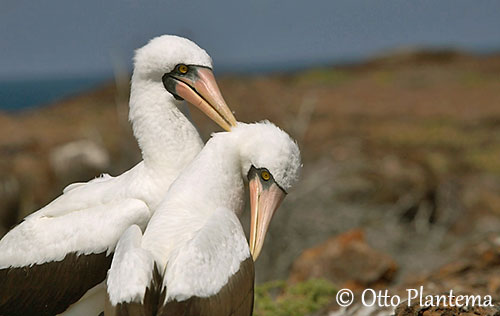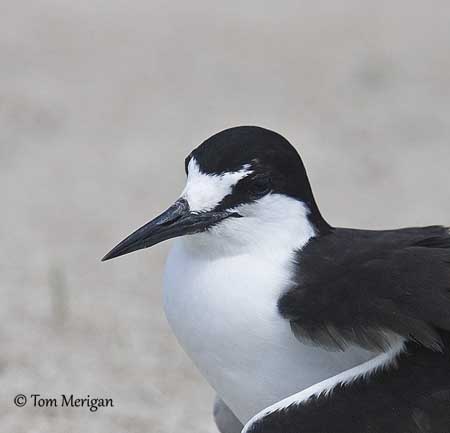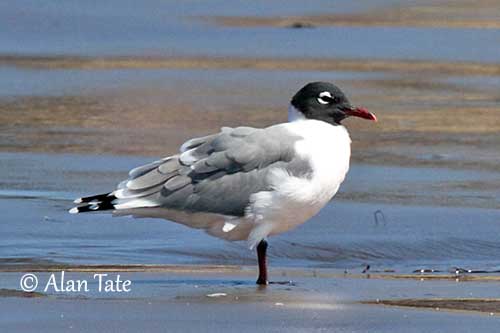
Bird species list:
American Bittern - Botaurus lentiginosus - Butor d’Amérique
American Coot – Fulica americana – Foulque d’Amérique
American Purple Gallinule - Porphyrio martinica – Talève violacée
American Redstart – Setophaga ruticilla – Paruline flamboyante
American White Ibis – Eudocimus albus – Ibis blanc
American Wigeon - Mareca americana - Canard à front blanc
American Woodcock – Scolopax minor – Bécasse d’Amérique
Arctic Tern - Sterna paradisaea – Sterne arctique
Arctic Warbler - Phylloscopus borealis - Pouillot boréal
Band-rumped Storm Petrel - Hydrobates castro - Océanite de Castro
Bar-tailed Godwit - Limosa lapponica - Barge rousse
Bay-breasted Warbler - Setophaga castanea - Paruline à poitrine baie
Barn Swallow - Hirundo rustica - Hirondelle rustique
Belted Kingfisher - Megaceryle alcyon - Martin-pêcheur d'Amérique
Black-crowned Night Heron – Nycticorax nycticorax – Bihoreau gris
Black-headed Gull – Chroicocephalus ridibundus – Mouette rieuse
Black Noddy - Anous minutus - Noddi noir
Blackpoll Warbler - Setophaga striata – Paruline rayée
Black-tailed Gull - Larus crassirostris - Goéland à queue noire
Black Tern - Chlidonias niger - Guifette noire
Black-throated Green Warbler - Setophaga virens - Paruline à gorge noire
Black-winged Petrel - Pterodroma nigripennis - Pétrel à ailes noires
Blue-winged Teal - Anas discors - Sarcelle à ailes bleues
Bobolink – Dolichonyx oryzivorus – Goglu des prés
Brown Booby – Sula leucogaster – Fou brun
Brown Noddy - Anous stolidus - Noddi brun
Brown Thrasher – Toxostoma rufum – Moqueur roux
Buff-bellied Pipit - Anthus rubescens - Pipit farlousane
Buller's Shearwater - Ardenna bulleri - Puffin de Buller
Canada Goose - Branta canadensis - Bernache du Canada
Canada Warbler - Cardellina Canadensis - Paruline du Canada
Canvasback – Aythya valisineria – Fuligule à dos blanc
Cinnamon Teal - Anas cyanoptera - Sarcelle cannelle
Cliff Swallow - Petrochelidon pyrrhonota - Hirondelle à front blanc
Common Gallinule - Gallinula galeata - Gallinule d’Amérique
Common Nighthawk - Chordeiles minor - Engoulevent d’Amérique
Common Yellowthroat - Geothlypis trichas - Paruline masquée
Cook's Petrel - Pterodroma cookii - Pétrel de Cook
Crested Auklet - Aethia cristatella - Starique cristatelle
Dark-billed Cuckoo - Coccyzus melacoryphus - Coulicou de Vieillot
Eastern Kingbird – Tyrannus tyrannus – Tyran tritri
Eastern Wood-Pewee - Contopus virens - Pioui de l’est
Eurasian Wigeon - Mareca penelope - Canard siffleur
Franklin’s Gull - Leucophaeus pipixcan - Mouette de Franklin
Galapagos Petrel - Pterodroma phaeopygia - Pétrel des Galápagos
Garganey - Anas querquedula - Sarcelle d’été
Glaucous Gull - Larus hyperboreus - Goéland bourgmestre
Golden-winged Warbler - Vermivora chrysoptera - Paruline à ailes dorées
Gould's Petrel - Pterodroma leucoptera - Pétrel de Gould
Great Black-backed Gull – Larus marinus – Goéland marin
Great Blue Heron – Ardea Herodias – Grand Héron
Great Egret - Egretta alba - Grande aigrette
Great Frigatebird - Fregata minor - Frégate du Pacifique
Great Shearwater - Ardenna gravis - Puffin majeur
Great Skua - Stercorarius skua - Grand labbe
Greater White-fronted Goose - Anser albifrons - Oie rieuse
Greater Yellowlegs - Tringa melanoleuca - Chevalier criard
Green-backed Heron – Butorides striatus – Héron strié
Green-winged Teal - Anas carolinensis - Sarcelle à ailes vertes
Grey-cheeked Thrush - Catharus minimus - Grive à joues grises
Grey Plover - Pluvialis squatarola - Pluvier argenté
Harlequin Duck - Histrionicus histrionicus - Arlequin plongeur
Juan Fernandez Petrel - Pterodroma externa - Pétrel de Juan Fernandez
Kelp Gull - Larus dominicanus – Goéland dominicain
Kermadec Petrel - Pterodroma neglecta - Pétrel des Kermadec
Killdeer - Charadrius vociferous - Pluvier kildir
Lapland Longspur - Calcarius lapponicus - Bruant lapon ou Plectrophane lapon
Laughing Gull - Leucophaeus atricilla - Mouette atricille
Leach’s Storm-Petrel - Oceanodroma leucorhoa - Océanite cul-blanc
Least Bittern – Ixobrychus exilis – Petit blongios
Least Sandpiper - Calidris minutilla - Bécasseau minuscule
LeConte's Sparrow - Ammospiza leconteii - Bruant de LeConte
Lesser Scaup - Aythya affinis - Petit Fuligule
Lesser Yellowlegs - Tringa flavipes - Chevalier à pattes jaunes
Little Gull - Hydrocoloeus minutus - Mouette pygmée
Long-billed Dowitcher - Limnodromus scolopaceus - Bécassin à long bec
Long-tailed Duck - Clangula hyemalis - Harelde boréale
Long-tailed Jaeger - Stercorarius longicaudus - Labbe à longue queue
Magnificent Frigatebird – Fregata magnificens – Frégate superbe
Magnolia Warbler - Setophaga magnolia - Paruline à tête cendrée
Mangrove (Yellow) Warbler - Setophaga petechia - Paruline jaune
Manx Shearwater - Puffinus puffinus - Puffin des Anglais
Marbled Godwit - Limosa fedoa - Barge marbrée
Markham’s Storm-Petrel - Hydrobates markhami - Océanite de Markham
Masked Booby - Sula dactylatra - Fou masqué
Mourning Dove – Zenaida macroura – Tourterelle triste
Nazca Booby - Sula granti - Fou de Grant
Northern Pintail - Anas acuta - Canard pilet
Northern Shoveler - Anas clypeata - Canard souchet
Northern Waterthrush - Parkesia noveboracensis – Paruline des ruisseaux
Northern Wheatear - Oenanthe oenanthe - Traquet motteux
Osprey – Pandion Haliaetus – Balbuzard pêcheur
Ovenbird – Seiurus aurocapilla – Paruline couronnée
Pacific Golden Plover - Pluvialis fulva - Pluvier fauve
Palm Warbler - Setophaga palmarum - Paruline à couronne rousse
Parasitic Jaeger or Arctic Skua - Stercorarius parasiticus - Labbe parasite
Pectoral Sandpiper - Calidris melanotos - Bécasseau tacheté
Peregrine Falcon - Falco peregrinus - Faucon pèlerin
Pigeon Guillemot - Cepphus columba - Guillemot colombin
Pink-footed Shearwater - Ardenna creatopus - Puffin à pieds roses
Pomarine Skua or Jaeger - Stercorarius pomarinus - Labbe pomarin
Prairie Falcon - Falco mexicanus - Faucon des prairies
Prairie Warbler – Setophaga discolor – Paruline des prés
Prothonotary Warbler - Protonotaria citrea – Paruline orangée
Purple Martin - Progne subis - Hirondelle noire
Red-billed Tropicbird – Phaethon aethereus – Phaéton à bec rouge
Red-footed Booby – Sula sula – Fou à pieds rouges
Red Phalarope - Phalaropus fulicarius - Phalarope à bec large
Red-tailed Tropicbird - Phaethon rubricauda - Phaéton à brins rouges
Red-throated Pipit - Anthus cervinus - Pipit à gorge rousse
Ring-necked Duck - Aythya collaris - Fuligule à bec cerclé ou à collier
Ruddy Turnstone - Arenaria interpres - Tournepierre à collier
Ruff - Philomachus pugnax - Combattant varié
Rusty Blackbird - Euphagus carolinus - Quiscale rouilleux
Sanderling – Calidris alba - Bécasseau sanderling
Sand Martin - Riparia riparia - Hirondelle de rivage
Scarlet Tanager – Piranga olivacea – Tangara écarlate
Semipalmated Plover - Charadrius semipalmatus – Gravelot semipalmé
Short-billed Dowitcher - Limnodromus griseus - Bécassin roux
Snowy Egret – Egretta thula – Aigrette neigeuse
Solitary Sandpiper – Tringa solitaria – Chevalier solitaire
Sooty Shearwater - Ardenna grisea - Puffin fuligineux
Sooty Tern - Onychoprion fuscatus - Sterne fuligineuse
Sora Crake – Porzana carolina – Marouette de Caroline
South Polar Skua - Stercorarius maccormicki - Labbe de Mc Cormick
Spectacled Tern or Grey-backed Tern - Onychoprion lunatus - Sterne à dos gris
Spotted Sandpiper - Actitis macularius - Chevalier grivelé
Stejneger's Petrel - Pterodroma longirostris - Pétrel de Stejneger
Summer Tanager – Piranga rubra – Tangara vermillon
Tahiti Petrel - Pseudobulweria rostrata - Pétrel de Tahiti
Tennessee Warbler - Leiothlypis peregrina - Paruline obscure
Tree Swallow – Tachycineta bicolour – Hirondelle bicolore
Virginia Rail – Rallus limicola – Râle de Virginie
Wandering Tattler - Tringa incana - Chevalier errant
Wedge-rumped Storm Petrel - Oceanodroma tethys - Océanite téthys
Wedge-tailed Shearwater - Ardenna pacifica - Puffin fouquet
Western Cattle Egret - Bubulcus ibis - Héron garde-bœufs
Western Sandpiper - Calidris mauri - Bécasseau d’Alaska
Whimbrel – Numenius phaeopus – Courlis corlieu
White-faced Ibis - Plegadis chihi - Ibis à face blanche
White-necked Petrel - Pterodroma cervicalis - Pétrel à col blanc
White-tailed Tropicbird – Phaethon lepturus – Phaéton à bec jaune
White Tern – Gygis alba – Gygis blanche
White Wagtail - Motacilla alba - Bergeronnette grise
Wilson’s Phalarope - Phalaropus tricolour - Phalarope de Wilson
Worm-eating Warbler – Helmitheros vermivorum – Paruline vermivore
Yellow-billed Cuckoo - Coccyzus americanus - Coulicou à bec jaune
Yellow-billed Loon or White-billed Diver - Gavia adamsii - Plongeon à bec blanc
Yellow-crowned Night Heron – Nyctanassa violacea – Bihoreau violacé
Yellow-throated Warbler - Setophaga dominica - Paruline à gorge jaune

CLIPPERTON ISLAND BIRD SPECIES
Clipperton Island or Ile de La Passion in French, is a 9 km² uninhabited French coral atoll in the eastern Pacific Ocean. It is located 1,120 kilometres from SW of Mexico.
The atoll is almost circular and encloses a stagnant brackish water lagoon with shallow areas over the previous coral reefs, but it also contains some deep basins of 43-72 metres deep. But the water at the top is nearly fresh. About 45% of the surface is covered with seaweed beds.
On the ten islets present in the lagoon, six are covered with vegetation.
The atoll is about three metres high in most places, with a promontory of 21 metres high with a ruined lighthouse at top. A tuna fishing station is also present on the island.
The vegetation includes sparse low scrub of spiny grass, a creeping plant of genus Ipomoea, some patches of wild tobacco and a few coconut groves. Most of the current vegetation was probably introduced by humans. But two sedges are probably native of the island, the Salt heliotrope (Heliotropium curassavicum) and the Common purslane (Portulaca oleracea).
The discovery of the island has been inconsistently reported, but it has been noted to discovered on 15 November 1528 by an expedition commissioned by Hernán Cortés (Spanish conquistador in Mexico) to find a route to the Philippines.
Another story claims that the explorer Ferdinand Magellan found the island in 1521.
The island was rediscovered on Good Friday, 3 April 1711, by French sailors. It was named Ile de La Passion, due to the special date of the discovery.
However, the name Clipperton comes from John Clipperton, an English pirate, who is said to have passed by the island during the early 18th century, in 1705.
Clipperton Island is the only French possession in the North Pacific Ocean. It has been annexed by France in 1855.

Clipperton Island has a tropical climate, with temperatures between 20 and 32°C, and is subject to tropical storms.
Thousands of seabirds and millions of land crabs are living here.
The first scientific observation reports a huge density in the numbers of seabirds. But due to the introduction of pigs by phosphate operators, the numbers fell rapidly in the early 20th century. However, the pigs were eradicated in 1958, involving a good reconstitution of the avian colonies.
The breeding seabirds, all listed as Least Concern by the IUCN (The International Union for Conservation of Nature), include several species such as the White Tern, the Masked Booby, the Sooty Tern, the Brown Booby, the Brown Noddy, the Black Noddy and the Great Frigatebird.
Several Anseriformes are reported in the lagoon, whereas migratory land birds rest on the island during their winter trips to the Southern Hemisphere.
The Masked Booby is the dominant species on the island, with up to 110,000 individuals recorded in the mid-2000s, to less than 40,000 at the last census.
Clipperton Island has been identified as an important Bird Area by Birdlife International – Data Zone.
The atoll in East Pacific Ocean is described as inhospitable as it is hard to reach. The land is barren and treacherous reefs surround the island on all sides. The place is known for hosting a massive population of crabs and seabirds. It is no longer inhabited by human settlement and is one of the least disturbed systems in the Pacific Ocean.
This island is in a way a welcome stopover for all the migratory birds that pass by. At certain times of the year, the ground is almost completely covered with nesting birds and resting migratory species.
Let them enjoy this haven of peace as long as it is not yet too much exploited by human!
Text by Nicole Bouglouan
Sources of the text:
Wikipedia, the free encyclopaedia
Avibase (Denis Lepage)
IUCN Red List of Threatened Species
Bibliographie de l’île de Clipperton - Île de La Passion (1711-2005)
Clipperton, environnement et biodiversité d'un microcosme océanique
